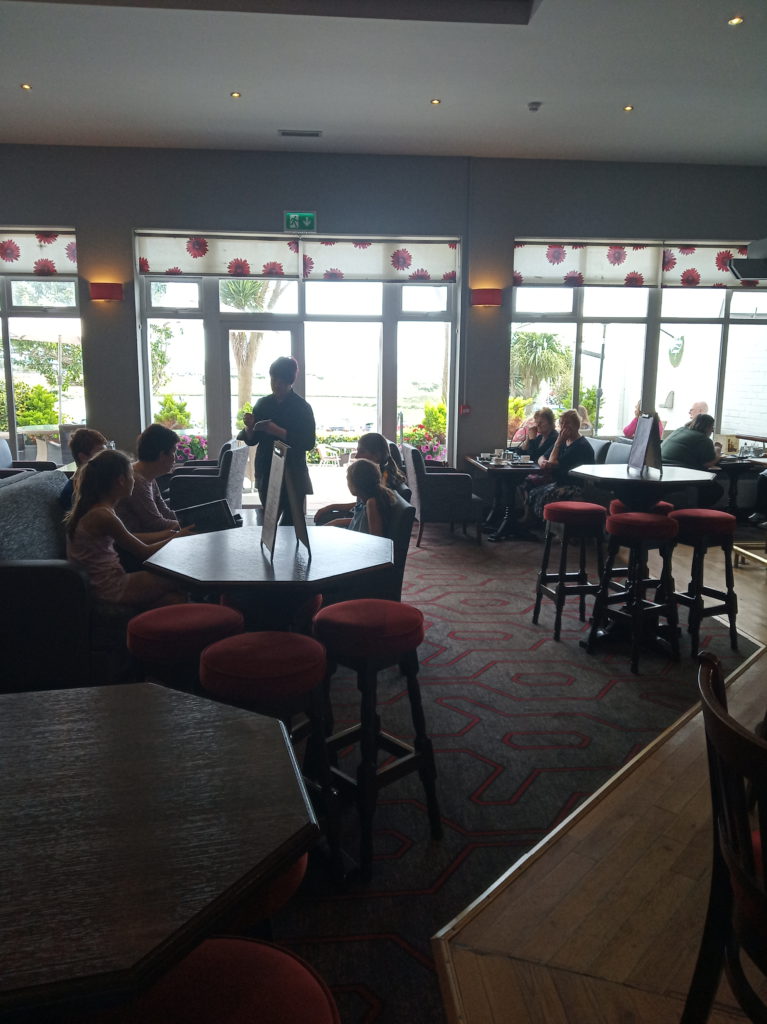Diabetes: Diabetes Skin Problems: Learn How To Easily Prevent Skin Disorders Linked to Diabetes
Diabetes can affect the skin in a number of ways that can make a person feel less than comfortable.
Long-term Type 2 diabetes with hyperglycemia (high blood glucose) tends to reduce blood flow to the skin.
It can also cause damage to blood vessels and nerves.
Decreased blood circulation can lead to changes in the skin’s collagen. This changes the skin’s texture, appearance, and ability to heal.
Damage to the skin cells can even interfere with your ability to sweat.
It can also increase your sensitivity to temperature and pressure.
Some glucose-lowering medications may also increase the risk of developing diabetes-related skin problems.
In fact, as many as a third of people with diabetes will have a skin condition at some point in their lifetime.

Solve Your Skin Problems (Optimum Nutrition Handbook)
Skin problems may alert your doctor to the fact that you have diabetes before you have any other signs.
And after you’re diagnosed with diabetes, continued skin problems may mean your condition isn’t under control.
Harmful infections receive sustenance from blood sugar.
When you have high levels of blood sugar — or too much glucose in your bloodstream — your body tries to remove the excess by excreting it in your urine.
It takes water to make urine, which leads to a loss of moisture in your body.
With this loss of fluid comes a loss of moisture in your skin, leaving it dry and easily prone to cracking.
Cracks in your skin invite infection because they make it easier for germs to get in.
Diabetics have generally weaker immune systems, making them less able to fight infections.
Also, nerve damage and poor circulation slow tissue healing.
As a result, people with diabetes often have more frequent and serious wounds and skin infections than people without the condition.
While some skin conditions may appear uniquely in people with diabetes, others are simply more common in people with diabetes.
The good news is that a fair number of these conditions are treatable or can be prevented by maintaining blood glucose control and taking good daily care of your skin.
1.Dry, Itchy Skin

Hope’s Relief Intensive Dry Skin Rescue Cream – award winning natural formula for skin prone eczema, psoriasis and dermatitis (babies, children, adults)
Dry skin can occur as a result of high blood glucose. When the blood glucose level is high, the body attempts to remove excess glucose from the blood by increasing urination.
This loss of fluid from the body causes the skin to become dry.
Dry skin can also be caused by neuropathy (damage to the nerves) by affecting the nerves that control the sweat glands.
In these cases, neuropathy causes a decrease or absence of sweating that may lead to dry, cracked skin. Cold, dry air and bathing in hot water can aggravate dry skin.
Dryness commonly leads to other skin problems such as itching (and often scratching), cracking, and peeling.
Any small breaks in the skin leave it more exposed to injury and infection.
It is therefore important to keep skin well moisturized.
The best way to moisturize is to apply lotion or cream right after showering and patting the skin dry. This will seal in droplets of water that are present on the skin from the shower.
Skin that is severely dry may require application of heavy-duty emollients 2—3 times a day.
Itchy skin is usually related to dryness, but it can also be related to poor circulation, especially in the legs and feet.
This is typically due to atherosclerosis, a disease in which fatty plaques are deposited in the arteries.
Fungal infections, which can be more common when a person has high blood glucose, can also be very itchy.
2.Bacterial Infections
Photographic Print of Skin disorders, artwork
When blood glucose levels are high, a person with diabetes is more susceptible to infection. This is believed to be why there’s a higher incidence of certain bacterial infections among people with diabetes and why these infections tend to be more serious than in the general population.
There are different kinds of bacterial infections affecting the skin. These include styes, which are infections of the glands of the eyelids; boils, which are infections of the hair follicles; and carbuncles, which are deep infections of the skin and the underlying tissue.
There also are bacterial infections that affect the nails. With a bacterial infection, the areas involved generally are hot, swollen, red, and painful. Most bacterial infections require treatment with antibiotics in the form of pills and/or creams.
Click Here for some of the more common bacterial infections in people who have diabetes.
3.Fungal Infections
Fungal Infections of the Skin and Nails
High blood glucose levels can also predispose people with diabetes to developing common fungal skin infections from organisms such as Tinea and Candida.
Fungal infections can occur just about anywhere, including the feet (Tinea pedis), the hands (Tinea manuum), the body (Tinea corporis), and the groin (Tinea cruris).
Click Here For More Information
4.Skin Conditions Associated With Diabetes
The following skin conditions are strongly associated with having diabetes, but they can occur in people who don’t have diabetes as well.
4A.Acanthosis Nigricans
This condition is characterized by the formation of velvety, brownish, thickened areas of skin in the groin, underarms, under the breasts, and in the creases of the neck.
The affected skin may become leathery or warty or develop tiny skin tags.
Acanthosis nigricans is common in people who are obese, but it may also be associated with certain forms of cancer as well as endocrine disorders such as polycystic ovarian syndrome (PCOS), Cushing syndrome, and diabetes.
There is no cure for this condition, but it may improve with weight loss, topical bleaches, or a class of drugs known as keratolytics.
4B.Vitiligo
Tolenorm Ointment 75gms Vitiligo & Hypo-pigmentory Disorders
Vitiligo is a skin disorder that causes white spots or large areas of depigmentation to occur on various areas of the body.
About 30% of people with vitiligo have a family history of the condition, and it is more common in people with Type 1 diabetes than Type 2 diabetes.
Vitiligo progresses slowly over the years, commonly affecting the backs of the hands, the face, and body folds such as the underarms and groin.
Treatment of vitiligo is necessary only in people who have severe cases or who are considerably distressed by the condition.
Treatment involves the use of steroids or chemical agents called psoralens that are either placed directly on the skin or taken orally.
The most popular treatment, known as PUVA, uses oral psoralens in combination with phototherapy sessions, in which the person is exposed to ultraviolet light, specifically ultraviolet A.
4C.Granuloma Annulare

Treatments for Skin of Color (Expert Consult Title: Online + Print)
A common skin disorder of unknown cause, granuloma annulare manifests as skin-colored or pinkish groups of bumps, or papules, that may be arranged in rings.
There are several subtypes of granuloma annulare; the one associated with diabetes is called disseminated, or generalized, granuloma annulare, in which lesions are widespread over the body.
The use of steroid creams or ointments or steroid injections is sometimes used to treat lesions.
Most, however, disappear on their own within two years.
5.Diabetes-Related Skin Conditions
The following skin conditions occur almost exclusively in people who have diabetes.
5A.Diabetic Dermopathy
Skin and Systemic Disease: A Clinician’s Guide
This common skin condition is characterized by depressed, irregularly round or oval, light brown, shallow lesions.
Lesions may vary in number from few to many and are usually found on both legs but are not symmetrically distributed.
Dermopathy appears as scaly patches that are light brown or red, often on the front of the legs. The patches do not hurt, blister, or itch, and treatment generally is not necessary. The patches are sometimes called skin spots.
Because these lesions do not itch, hurt, or open up, they are often overlooked and not reported to the health-care provider.
Click Here For More Information
6.How Can These Skin Problems Be Prevented?
Certified Diabetes Educator Study Guide: CDE Exam Review with Practice Test Questions
Though there is no cure for diabetes,but there are a variety of treatment options that include lifestyle changes, over-the-counter and prescription treatments, and alternative remedies that can help manage skin conditions in diabetics.
Click Here For Free Ebook That Reveals Tips to Eliminate Your Acne Forever and Gain Beautiful Clear Skin!
6A.Over-the-Counter Remedies
Over-the-counter remedies are available for certain types of skin disorders associated with type 2 diabetes. These remedies include:
1.hydrocortisone
2.nonprescription antifungals, like clotrimazole
3.topical steroid medications (mild hydrocortisone)
4.Daily skincare must be simple and consistent. For cleansing and moisturizing, a gentle skin cleanser is preferable to harsh deodorant or fragranced soaps that strip the skin of moisture and oils.
Lukewarm rather than hot water should be used to reduce irritations and dryness, and diabetics should avoid long soaks in the tub, since this draws moisture out of the skin.
A penetrating body cream can be applied to the skin after showering or bathing to replenish oils and moisture.
6B.Prescription Medications
Some skin conditions are severe enough that medical attention and prescription medications are required. Prescription medications and treatments available include:
1.antibiotics (topical or oral) to treat skin infections
2.stronger antifungal medications
3.insulin therapy to help regulate the origin of skin conditions
6C.Alternative Remedies

Acne Pills with Pantothenic Acid and Vitamin B5 – Le Fair Complexion Formula – Natural Acne & Blackhead Supplement for Back Acne Hormonal Acne Cystic Acne & Adult Acne – Safe For Teenagers & Adults
For those who aren’t interested or don’t need prescription medications, alternative remedies are available for those with diabetes-related skin problems. These alternative remedies include:
1.talcum powder where skin touches other parts of the skin (armpit, behind the knees)
2.lotion to soothe dry skin can reduce itching
3.aloe vera used topically (not orally)
4.People with diabetes can be deficient in fatty acids, zinc, and vitamins A and E. These are essential to skin integrity and wound healing.
5. Natural ingredients such as olive oil and primrose oil soften and soothe dry skin and replenish essential elements without irritation.
Before using any natural or alternative remedies, consult your doctor. Even all-natural herbal supplements can interfere with medicine you’re currently taking.
6D.Lifestyle Changes
Though sometimes genetics and other factors come into play, being overweight and inactive can have an effect on diabetes.
Lifestyle changes that can help manage diabetes include:
1.Following a healthy diet, including eating more fruits, vegetables, and whole grains
2.Maintaining an exercise program, aiming for 30 minutes of cardio, 5 days a week
3.Monitor your blood sugar
By learning how your body reacts to certain foods and medications, you can better learn how to maintain a healthy blood sugar level.
4.Avoid and actively prevent dry skin
5.Avoid scratching dry skin, which can create lesions and allow infections to set in
6.Treat cuts immediately.Wash minor cuts with soap and water and cover with a sterile gauze secured with a hypoallergenic or paper tape.
Only use an antibiotic cream or ointment if your doctor says it’s okay. Change the bandage at least once a day. See a doctor right away if you get a major cut, burn, or infection.
7.Keep your home humid during dry months
8.Avoid hot baths or showers, as they can dry skin out
9.Pat your skin dry after bathing—while rubbing the skin helps slough off dead skin cells, it can also aggravate the skin, reduce moisture and cause breaks, which leaves you more susceptible to infection.
10.Don’t put lotions between toes. The extra moisture there can encourage fungus to grow.
11.Avoid using feminine hygiene sprays or vaginal douches. They can alter the pH balance of the vagina and set the stage for increased fungal growth.
12.Drink plenty of fluids, like water and caffeine-free, sugar-free drinks, to keep your skin hydrated.
13.Eat foods rich in omega-3 fatty acids, which nourish the skin. This includes fish like salmon, sardines, albacore tuna and mackerel, as well as tofu and other forms of soybeans, walnuts, flaxseed and their oils.
14.Take extra good care of your feet. Check them every day for sores and cuts. Wear broad, flat shoes that fit well. Check your shoes for foreign objects before putting them on.
15.See a dermatologist (skin doctor) or consult with your endocrinologist about skin problems if you are not able to solve them yourself.
There are a fair share of skin disorders associated with diabetes, some more serious than others.
While some skin conditions associated with diabetes are mostly harmless and will go away on their own, some can be much more dangerous.
If you have a flare-up of a new skin condition listed above, make an appointment to see your doctor as soon as possible.
Work with your doctor to develop a skin care regimen that wards off these and other skin problems.
Start by regularly washing with a mild soap. Rinse thoroughly and dry carefully. Don’t miss areas such as between your toes and under your breasts.
Keep your skin moist by drinking plenty of water and applying lotion or cream regularly.
Your doctor can suggest an appropriate formula. And wear cotton underwear so that air can move around your body.
For more great information on Diabetes And Skin Conditions refer to the article Diabetes & Yeast Infection: The Most Relevant Connection.
For more great Health and Nutrition Tips refer to the website positivehealthwellness.com.
Keeping your diabetes under control is the most important factor in preventing the skin-related complications of diabetes.
Follow your health care provider’s advice regarding nutrition, exercise, and medicine.
Maintaining control of blood glucose level within the range recommended by your health care provider is most important.
Proper skin care also can help reduce your risk of skin-related problems.
If you have any information,questions, or feedback you would like to include in this post.
Please email momo19@diabetessupportsite.com or leave your comments below.





























































































































































































































































































